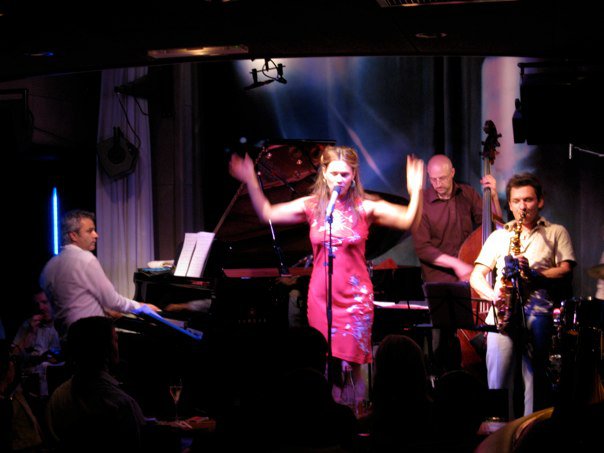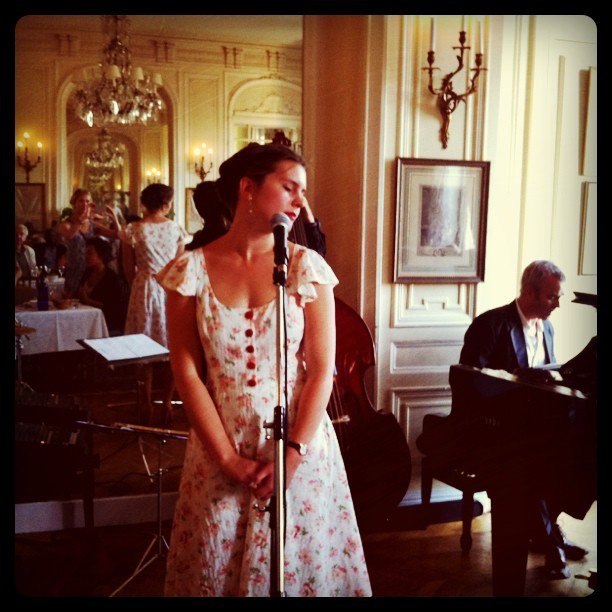An Australian in Paris, article and images by Chris Cody

Paris, city of lights, dreams, romance and artists has always fascinated. It’s not only a beautiful ancient town with amazing old buildings, and a fascinating history to tell on every corner, but is one of the great artistic capitals of the world, with hundreds of museums, art galleries, theatres, cinemas, exhibitions and events. You meet artists from all over the world here and Paris has a long and proud history of receiving both artists and political refugees from the most diverse cultures: Chopin, Rimbaud, Hemingway, Miller, Orwell, Beckett, Picasso, Dali, Stravinsky and jazz musicians Dexter Gordon, Bud Powell, Kenny Clark, Chet Baker and Archie Shepp to mention just a few.
As soon as you get off the airport train at Gare du Nord or Chatelet station your senses are assaulted – it’s noisy and crowded with people rushing in all directions and there are the distinctive odours of coffee, croissants, cigarettes and urine in the air. African musicians are literally jamming for their lives, while accordionists battle with Gypsy violinists in the metro for the best position, and a saxophonist tries to outblow a Peruvian band on the stairway out. And that is the best thing about the music scene as well: there really are all styles for all tastes at all hours, from the sublime to the ridiculous.
For the jazz lover, you can find it all: New Orleans traditional, swing, bebop, hard bop, free, all the fusions, world, African, Arab, contemporary, through-composed, electronic and more, played by French, American, or even Russian musicians. There are at least nine permanent full-time jazz venues, and about a dozen more part-time jazz venues, not to mention all the little bars and restaurants that often program some jazz.
For the jazz lover, you can find it all: New Orleans traditional, swing, bebop, hard bop, free, all the fusions, world, African, Arab, contemporary, through-composed, electronic and more, played by French, American, or even Russian musicians. There are at least nine permanent full-time jazz venues, and about a dozen more part-time jazz venues, not to mention all the little bars and restaurants that often program some jazz.
At Le Petit Journal on the Left Bank, you might hear a boogie woogie pianist belting it out while over in the rue des Lombards, Paris’ 52nd street, you can choose between the Sunset and the Duc des Lombards for the biggest names in hard hitting post bop or contemporary jazz. Next door, Le Baiser Salé or Salty Kiss is a great room to check out modern jazz or African fusion. Former New Yorker and Miles Davis saxophonist Rick Margitza is a regular with his band. The Batofar and the Guingette Pirate are a couple of peniches or barges that put on jazz, often of the electro experimental variety, the Café Universel is a good place to hear singers while The New Morning is a big room for touring acts.
Go up to the more African /Arab neighbourhood in the 18th, north of Montmartre and Sacre Coeur, to hear a free-style African jazz band share the stage with a traditional story teller and tuck into a excellent chicken tagine at the same time at the Bab-ilo. At the underground Caveau de la Huchette down at St. Michel where Lionel Hampton often played they still have a jazz orchestra for people to dance to in a room where revolutionary tribunals were presided over by Robespierre. They also have jazz a few metres further up the road, at the Caveau des Oubliettes, a former mediaeval underground dungeon where political enemies were placed in Oubliettes or tiny cells three floors below the level of the Seine to be forgotten for a while. Lionel the barman will take you down to visit them before the concert starts if you catch him in a friendly mood. The cells are too small to stand in; there is just enough room to sit on the carved stone seat. Prisoners were left to rot, go mad, or when the Seine levels rose after heavy rain, drown. Today, the musicians perform in main room just above the cells. There is a bit of graffiti carved in the wall in front of the stage: “Pray for me, for tomorrow I shall be hanged”. It’s a good way to get the musicians focussed before the gig.

There are numerous jazz festivals in Paris ranging from the JVC festival to the Quartiers d’Eté, reflecting the broader national scene that has over four hundred and fifty jazz festivals on top of the countless “salles de concerts”, cultural centres and associations programming jazz. Clearly, the French like jazz! It’s still a “popular” style of music in their part of the world, not just an artform, and you can read about it on a regular basis in the mainstream media, or four national jazz magazines, hear it in radio and TV programs, in jingles and advertisements, in the metro, the streets and even the supermarket or waiting in queues at the Post Office.
Everyone you meet seems to have some jazz in their music collections, while the major record labels all advertise their leading jazz artists such as pianist Brad Mehldau for example on television, while his published music is used for mainstream TV programs and cinema. It is hard to imagine him having the same broad public impact anywhere else in the world. Thanks to this sort of exposure and culture, jazz reaches all around France, from the biggest towns to the smallest villages.
Let me give a small example: every year I played at a festival in Lautrec, a small walled mediaeval village surrounded by sunflower fields and rolling countryside. The locals feed the musicians on duck breast and wine, put us up in their farms, come to the concerts, and buy the CDs. For a crazy mid-summer week, the village heaves to jazz of all styles, blues, and more. The farmers who mostly grow garlic are rough country types who play rugby hard and drink even harder. And many are also modern jazz fans – which was surprising for me but not at all for them. And there are thousands of villages like this!

You can show up to a room in a village in the middle of nowhere in mid-winter during a snow storm for a jazz concert organised by the local jazz or cultural association and have a hundred people all there to eat, drink and enjoy the music! This is the grass roots scene that has underscored the success of the bigger and better known festivals. Marciac, another small village in the south west of France, was discovered by Wynton Marsalis on holiday and he liked it so much there that he decided to come back and help out with the local music school and band. Well it’s now the biggest jazz festival in France with hundreds of musicians performing annually and thousands of spectators and massive mainstream media coverage.
It is no co-incidence that all the American jazz musicians aim to come and tour France as often as possible as it is here and elsewhere in Europe that they often make most of their living. They get paid and treated on a level so different to that back home. The funding makes a big difference, with each town, political department and region investing varying amounts depending on their political program, knowing that annual jazz festivals are a great way to attract tourism, enhance their prestige and provide stimulus to their economies.
All the great international jazz musicians have toured and continue to tour to Paris and France regularly, from all the most well-known to the up and coming younger generation. These are what the French call “têtes d’affiche”, and they are supported by lesser-known but talented local bands who get a chance to play on the same stage, and jam after hours with the stars.
Speaking of the local resident jazz musician, they can apply for the status of “intermittent de spectacle” which means that if they can do at least 43 declared gigs in 10 months, with all the social charges and taxes paid for retirement, sick leave, holiday leave and so on, then they are entitled to draw generous unemployment benefits for every day they don’t work. It’s obviously pretty handy if there is a quiet period in the year and it boosts their income up to at least the national average salary level providing legitimacy and security. Not all musicians qualify, but the incentive is there, and can make music worthwhile even for the less-motivated musician.
So what’s the downside? Well, the winter lasts for eight months and is cold and permanently gray and damp, while spring, summer and autumn are short and over before you know it. The air pollution is pretty bad due to all the traffic and industry choking up Paris and its suburbs, and space is, well, limited to put it simply. Then there is dealing with bureaucracy and administration that makes you wonder if Kafka wasn’t Czech but French after all. But if you can survive all that, then for the jazz fan or musician, Paris really is pretty special – in winter when it drizzles or summer when it sizzles.
















Grow the Jazz scene in Sydney. You have style.